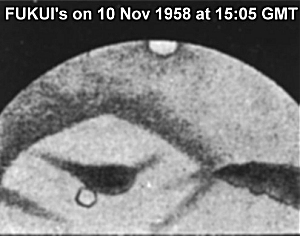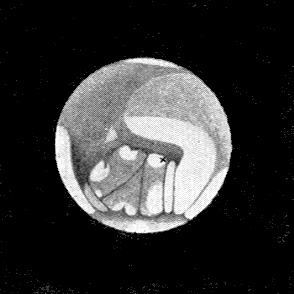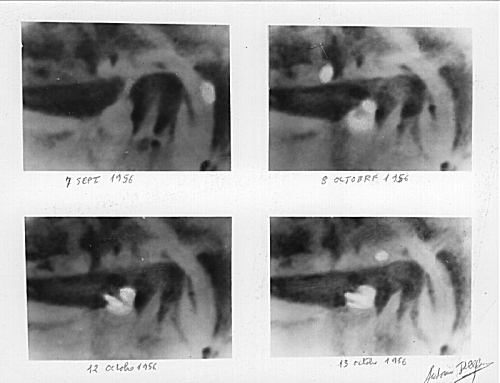
Masatsugu MINAMI

 We are accustomed with the rumor of several phenomena of sudden glittering of some points on Mars since they were reported in Tsuneo SAHEKI's book in Japanese (Mars and its Observations, 1967, Tokyo). The article by DOBBINS and SHEEHAN gives a new and reasonable interpretation to the phenomena for example observed by T SAHEKI, S FUKUI and S TABABE in November 1958.
We are accustomed with the rumor of several phenomena of sudden glittering of some points on Mars since they were reported in Tsuneo SAHEKI's book in Japanese (Mars and its Observations, 1967, Tokyo). The article by DOBBINS and SHEEHAN gives a new and reasonable interpretation to the phenomena for example observed by T SAHEKI, S FUKUI and S TABABE in November 1958.
Let us simply suppose there is a mirror laid on a level plane. Then it will shine momentarily to our eye on the Earth if the place comes to the central sub-Earth point and at the same time if the Sun stays just behind us. This implies the ideal moment comes when the sub-Earth point equals to the sub-Solar point.
What occurred in November was nearly this: The Almanac in 1958 records
| sub-Earth | sub-Solar | Ls | app diam | |
| 15 Nov 1958 | 13.30°S | 13.64°S | 324.55° | 19.04" |
| 17 Nov 1958 | 13.67°S | 13.26°S | 325.65° | 18.93" |
which implies the latitude of both points coincided between 15 Nov and 17 Nov: Since the phase angle did not vanish, our eye-line did not run in a direction along the Sun beam, but one of the necessary conditions is fulfilled. Furthermore, we are not sure any place is plainly leveled. So it is quite reasonable if we following DOBBINS and SHEEHAN consider that the phenomenon observed by Sanenobu FUKUI (retired, but formerly a member of the OAA Mars Section) on 10 November 1958 at 15:05(GMT) was due to a Sun glint. Note that the latitude of the sub-Solar point (=sub-Earth point) was between 13°S~14°S, and the place FUKUI observed a flash was just between Tithonius L and Solis L (and so between 10°S~20°S).
The article is more interesting in that it predicts the similar phenomenon of the coincidence will occur also this year, as this year's Almanac reads
| sub-Earth | sub-Solar | Ls | app diam | |
| 08 June 2001 | 1.91°N | 2.36°N | 174.51° | 20.10" |
| 12 June 2001 | 2.69°N | 1.41°N | 176.74 | 20.44" |
and
| sub-Earth | sub-Solar | Ls | app diam | |
| 09 Dec 2001 | 23.58°S | 24.28°S | 287.13° | 7.05" |
| 13 Dec 2001 | 24.20°S | 23.92°S | 289.58° | 6.91" |
The latter case may be out of the case however since the phase angle is large and the angular diameter is small, while the former case is very interesting because the planet is near at opposition and the phase angle is only 5 degrees. Furthermore the latitude 2°N is reminiscent of the phenomena observed several times hitherto at Edom. The time the point (350°W, 2°N) comes to the CM is 9:50 GMT, and so this moment is never observable in Japan (but in the US). In Japan however it is observable from 13h GMT (LCM=037°W on 10 June).
Glittering of Edom was for example observed in 1954 and 1956: The former case is comparable with the present 2001 apparition, and so let us pick out one line from the Almanac in 1954
| sub-Earth | sub-Solar | Ls | app diam | |
| 18 June 1954 | 0.29°S | 0.22°S | 180.54° | 21.09" |
SAHEKI's observation of the flash of Edom was given on 1 July 1954, and so there is some retardation. The sub-Earth point on 1 July was at 2°N and so good, but the sub-Solar point was 3°S. The moment the LCM was 320°W (and the phase angle =6°). The present year we will often have the case of 2°N, but not with 3°S at the same time. The case of C McCLELLAND in 1954 was on 24 July where the sub-Earth point latitude was 4°N and the sub-Solar one was 8°S.
(below) McCLELLAND observed that Edom was flashed for about one
minute on 24 July 1954 at 4:32 GMT.
He used a 33cm refractor
at the Pittsburgh University Observatory.


Audouin DOLLFUS observed a brightness of Edom of several days duration in 1956: If we pick out 12 Oct 1956 from his days, the sub-Earth point was at 21°S while the sub-Solar at 24°S. Any way it is far from the Equatorial Band. In DOLLFUS's case the brightening was not momentary, and has another important meaning: It was reasoned as a stay of a bright cloud matter.
Incidentally, the coincidence in 1956 occurred as follows, and so there might have been a flash at Solis L area:
| sub-Earth | sub-Solar | Ls | app diam | |
| 04 Aug 1956 | 19.77°S | 19.65°S | 235.81° | 20.71" |
| 06 Aug 1956 | 19.69°S | 19.95°S | 237.09° | 21.07" |
We finally comment that though the present apparition looks similar to those in 1986, 1969, and 1954 ( or further more to 1937), the Edom case doesn't repeat so often: The data in 1986 read:
| sub-Earth | sub-Solar | Ls | app diam | |
| 01 July 1986 | 7.46°S | 7.35°S | 197.31° | 22.21" |
| 05 July 1986 | 6.82°S | 8.33°S | 199.68° | 22.64" |
and the 1969 case reads
| sub-Earth | sub-Solar | Ls | app diam | |
| 27 May 1969 | 6.40°N | 7.09°N | 162.86° | 18.94" |
| 29 May 1969 | 6.79°N | 6.66°N | 163.93° | 19.10" |
As easy seen, any latitude is slightly remote from the Equatorial Band, and the data in 1937
as well as 1939 also read:
| sub-Earth | sub-Solar | Ls | app diam | |
| 17 May 1937 | 11.65°N | 12.14°N | 149° | 18.02" |
| 19 May 1937 | 12.02°N | 11.77°N | 149° | 18.15" |
| sub-Earth | sub-Solar | Ls | app diam | |
| 10 July 1939 | 9.80°S | 9.28°S | 205° | 22.78" |
| 12 July 1939 | 9.50°S | 9.74°S | 206° | 23.06" |
both of which also never imply the area around Edom. Thus the 2001 case proves to look quite rare as far as Edom is concerned, and surely it will occur first after 47 years. We thus express our sincere appreciation to the authors of the article for their timely pointing out of the case.